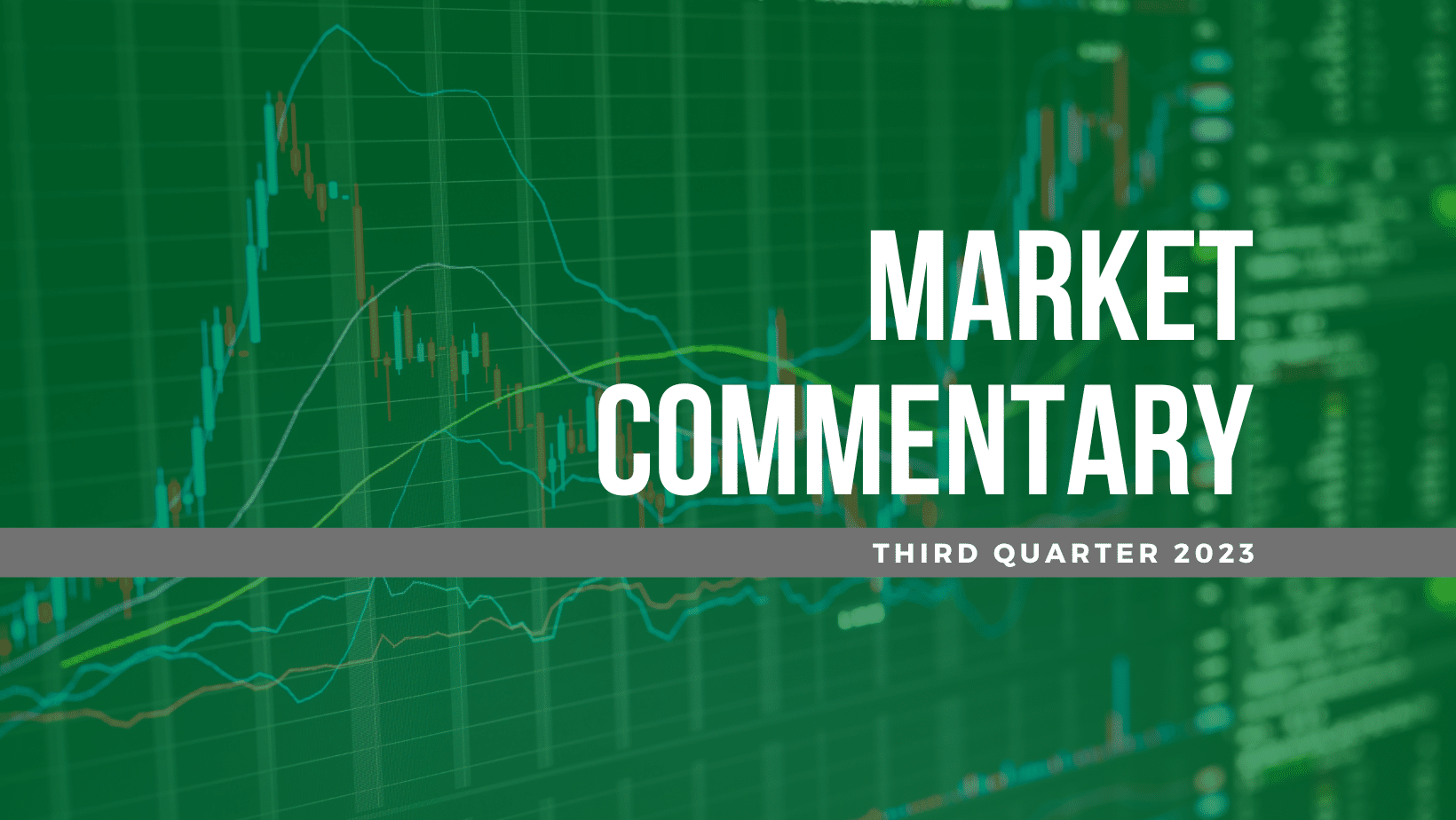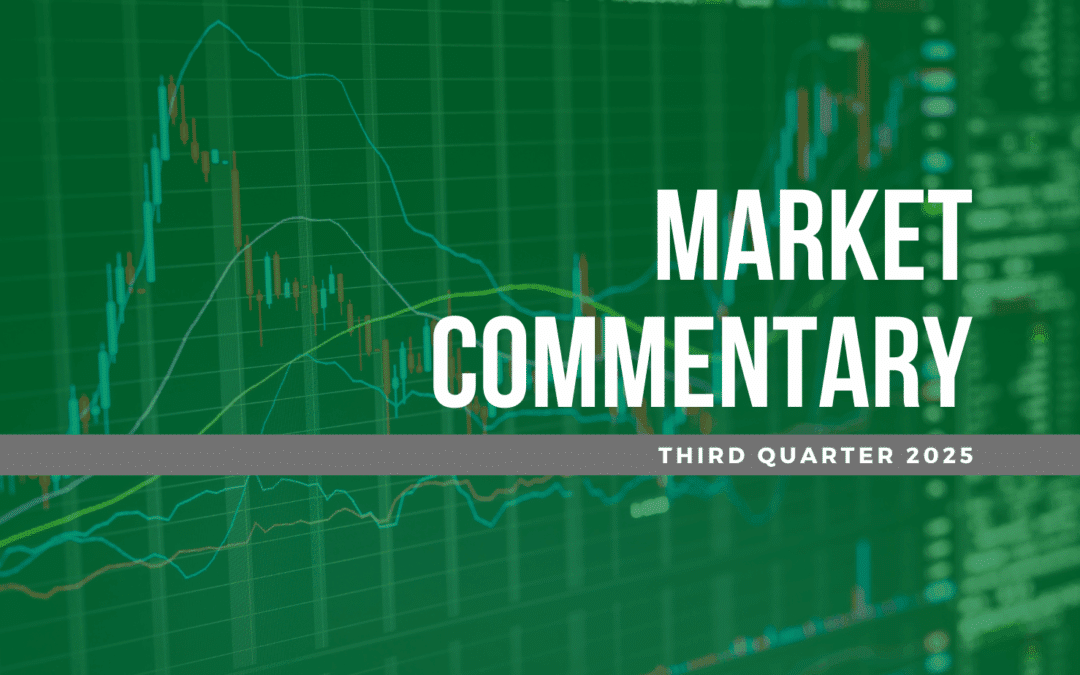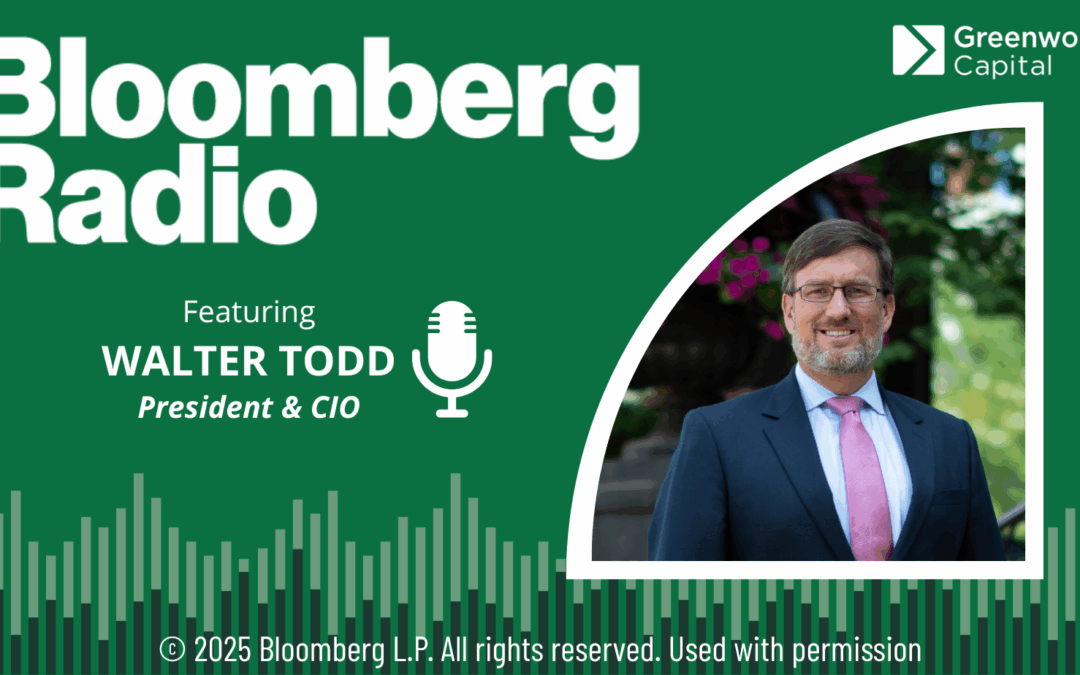Economic Overview
By Dr. Mark Pyles
On September 20th, the Federal Reserve Open Market Committee (FOMC) released their latest Summary of Economic Projections (SEP). Within those projections, the median real GDP growth rate was revised up to 2.1% for 2023, while the Unemployment Rate expectation for the end of the year was revised down to 3.8%. For perspective, the SEP released on December 14, 2022, had an estimate for 2023 real GDP growth of only 0.5% and an unemployment rate expectation of 4.6%.
Those December values provided simple conclusions – the Fed thought that their rate hiking campaign (one of the most dramatic in history) would necessarily cause a significant slowdown in economic activity and some harm to the labor market. That has now largely changed. And while it would be easy to say “they were wrong” in December of last year, the consensus market participant at that time likely felt the Fed did not seem to be negative enough on their outlook for economic activity.
The U.S. economy has held up much better than most – including the Fed – expected, producing an average real GDP growth of 2.2% over the last three quarters. As such, opinions have shifted significantly to the point that now a “soft landing” appears to be increasingly the new consensus viewpoint. After all, while growth remained strong, the headline Consumer Price Index (CPI) decreased from a shocking 9.1% year-over-year (YoY) figure in June 2022 to a much more palatable 3.7% in August of this year. And of course, in the background of this, as we will discuss in the investment commentary, we have equity markets that, on the surface, have fared reasonably well thus far in 2023.
As we sit at this interesting junction, perhaps value can be gleaned from examining the current economic backdrop while wearing opposing hats of the optimist and the pessimist investor.
Let us first don the hat of the optimist!
Indeed, there are certainly reasons to view things positively and the most dramatic of those lies in the current state of the labor market. At the risk of oversimplification, the labor market drives much of all economic activity. And there is no denying that the labor market has been remarkably resilient throughout the economic challenges we have faced coming out of the pandemic period. In fact, during the eight months of reported data thus far in 2023, we have seen an average of 236k jobs added per month to nonfarm payrolls. While down from the very high average of 399k per month in 2022, this compares favorably to the 190k per month average during the five years (2015-2019) preceding the pandemic. Further, jobless claims now stand at a 4-week moving average of only 211k. Over the five years prior to the pandemic, this number averaged 245k. So, according to the most visible and revered data in this space, jobs are still being added at an above-trend rate.
And the most supportive argument for the positive outlook on economic conditions may lie in the fact that earnings power has returned to positive territory. For example, real average hourly earnings (the growth in hourly earnings minus the increase in CPI) was negative on a YoY basis for an astounding 25 straight months, before turning positive in May 2023. Thus, while this is far from a perfect measure of employment compensation, the optimist could argue the consumer has survived an extended period of being underwater in terms of earnings power and now has seen relief.
More broadly speaking, the optimist can make the claim that the COVID period was unlike anything we have ever seen before and the economic recovery from it was likewise unprecedented. They could argue that we have already seen rolling recessions in different areas (e.g., housing, corporate profits, financial markets) and we are now past them. And then finally, that same optimist would argue that the Fed is either at, or certainly near, the end of their hiking campaign and the path to rates going forward is lower, not higher.
However, let’s turn to the pessimist viewpoint.
This starts with, like many things, the health of the consumer. According to the San Francisco Federal Reserve, the combination of stimulus programs and the inability to spend money resulted in accumulated excess savings of over $2 trillion at the peak level in August 2021. However, once released from their homes, consumers have aggressively spent down those excess savings. The current expectation is that the remaining portion will be spent off sometime during this third quarter. Further, recent estimates argue that any remaining excess savings are in the hands of the top 20% of households. More generally, the average savings rate as a percentage of disposable income now stands at 3.9%, considerably below the pre-COVID level of 6% from 2015-2019, and a far cry from the over 16% from March 2020 – May 2021. Put differently, many households that had seen a comfortable cushion in their bank accounts no longer have that to rely upon.
We have also seen a rapid rise in debt, particularly revolving debt such as credit card loans. In 2018 and 2019, there was approximately a 3.7% increase each year in revolving debt (corresponding to approximately $37.7B per year). In 2021 the increase was 6.7% ($65.7B) and in 2022 the increase was 15.1% ($159.1B). Through July 2023, the preliminary numbers indicate an annualized growth rate of 9.2%. All of this comes at considerably higher interest rates than in the pre-COVID period. Additionally, the resumption of student loan payments, estimated at $380 per month for millions of consumers begins in October. The pessimist would argue that this all creates a potentially worrisome situation for large swaths of the U.S. population that may be striving to maintain their post-COVID standard of living through the headwinds of negative cash flow patterns.
The pessimist would also want to discuss inflation. As of this writing, inflation has hit support levels. Headline CPI has actually increased from just under 3.0% YoY for June to 3.7% YoY as of the recent August print. Energy prices are of particular concern at present, with the price of oil increasing by over 40% from the low point in early May. Core CPI values, which strip out the volatile components of food and energy, do continue to decrease; but from higher levels (at 4.3% for August).
And then there is the pessimist’s view of the labor market, which centers on the notion that it looks a bit too good to be true. Over time, revisions to initial estimates are increasingly skewed to the negative. The last six months have each seen significant decreases between the first and third estimate of the U.S. Payrolls report. This is coupled with, and perhaps partially a result of, significantly declining response rates. For example, the response rate for the Current Employment Statistics (CES) Survey administered by the Bureau of Labor Statistics (BLS) has declined from an average of 60% during the five years pre-COVID to 41.6% as of June.
In conclusion, this continues to be a rocky economic landscape on which to gain solid footing for the path ahead. A case can be made rather convincingly of either outcome depending on which data is examined and how much trust can be placed in that data. We acknowledge that we were alongside consensus in expecting 2023 to be a much tougher economic year than it has thus far turned out to be and are encouraged by the continued strength of the U.S. economy. However, we remain hesitant to pronounce the all-clear. In the face of intensely nuanced and often contrary economic indicators, we currently hold a relatively simple position. We feel downside economic risk outweighs the upside potential. Put differently, we believe the long and variable lags from tighter monetary policy will begin to be felt rather than avoided.
The Stock Market
By Walter Todd
I read in a post recently that the movie, The Princes Bride, was released 36 years ago last month. It is a great watch if you’ve never seen it. In it, the character Vizzini screams “inconceivable” whenever something surprises him. I feel like Vizzini at times this year watching this market and the economy continue to bounce back after the Fed has hiked rates by over 500 basis points (5%) and I’m pretty sure people around me in the office have heard me mutter that word (and others) multiple times during the first nine months of 2023.

Trying to figure out this market has been much like The Battle of Wits in the same movie between Vizzini and the character Westley. It’s easy to overthink it. While the equity market did take a breather the most recent quarter, the market structure underneath remained much the same; that being the average stock underperforming the top of the market. A theme we have been highlighting all year. This has created a circumstance in which relative valuation looks increasingly attractive beyond the largest stocks (recall our discussion of FANGMA last quarter). Reexamining the performance comparison between the S&P 500 Index (SPX) to the Equal-weight S&P 500 (SPW), we see again in the third quarter the market-cap-weighted SPX outperforming the SPW by an additional 1.6%. Year-to-date, this spread has widened to 11.3%. We continue to believe this historically wide divergence should start to narrow as we move forward. With that said, let’s review the broader performance trends from the second quarter.
After starting strong in July, August and September were a bumpier ride. For the full quarter, the S&P 500 Index closed down -3.3%, including dividends. Year-to-date (YTD) the S&P remains up 13.1%. Small-cap stocks (as measured by the S&P 600) were also negative, ending the quarter lower by -4.9% and remained slightly positive +0.8% for the YTD period. This small vs. large spread is also reflective of the discussion from the first paragraph. International stocks did not escape the late quarter fall with Developed International Markets down by -4.0% for the quarter (as measured by the EAFE Index) and Emerging Markets (EM) -2.9% for the quarter (measured by the MSCI Emerging Market Index). These indices are up +7.6% and +2.1%, respectively, YTD. International stocks continue to lag their U.S. counterparts in 2023 due largely to less Technology exposure. Putting the U.S. and International Markets together, the MSCI All-Country World Index (ACWI) finished down by -3.3% for the three-month period and 10.5% YTD.
The third quarter did see some changes in sector performance in the U.S. Only two sectors were green for the period and only 4 of 11 outperformed the overall market. Energy rebounded significantly with the move higher in oil, taking the top spot up over +12%, Communication Services was the only one of “Big Three” (Technology, Communications Services and Consumer Discretionary) to remain near the top, +3%. After a very challenging first six months, Financials came in third in the past three months but still finished down -1%. Healthcare and Materials rounded out the top five, but still ended lower by -3% to -5%. Despite the market being in a “risk-off” mood, three traditionally defensive sectors of the market finished at the bottom of the pack (Inconceivable!). Consumer Staples, Real Estate and Utilities traded lower by 6% to 9%. Consumer Discretionary, Industrials and Tech finished in the middle, down around 5% each. Reviewing the YTD rankings, we still have the “Big Three” referenced above at the top, all up over 26%. Energy jumped to fourth but is up “only” 6%. Industrials and Materials also finished positive for the first nine months, approximately +4% and 3%, respectively. The remaining five sectors are negative YTD. Utilities is by far the worst performing sector, down over 14% through the first nine months of the year.
Similar to Mark’s comments on the economy in the prior section, this equity market has been full of conflicting signals and messages during the year. Analyzing the market from a factor standpoint, Size remained in favor during the third quarter, similar to the first two quarters this year. In contrast, Volatility and Growth rolled over as the market pulled back. Dividends and Value were mixed for the period but improved relative to their underperformance in the first half of the year. While our equity, strategies did not escape the downward market pressure in the recent period, this factor backdrop created a generally more favorable relative performance environment for us.
As we head into the last quarter of 2023, we enter a more favorable seasonal period for the market. However, based on the past four to six weeks, the path of interest rates and the U.S. dollar will likely greatly influence the direction of equities, regardless of the time of year. Economic data, earnings and the Federal Reserve should be the major determinant of these variables. We shall see if the fourth quarter is as Inconceivable as the first three. Also, 1987 was 36 years ago – Inconceivable!
The Bond Market
By John Wiseman
Interest rates moved higher, most acutely in longer-dated bonds. The Federal Reserve is nearing the end of its rate hiking cycle, but bond markets are re-pricing the probability that rates remain at higher levels to continue to bring down inflation data. The yield on the 2-Year Treasury Note finished the quarter at 5.04%, the highest level since 2006. This was an increase of 14 basis points (0.14%) for the quarter but resulted in a total return of 0.54% given the higher coupon income. For the year, its yield is 61 basis points higher producing a total return of 1.04%. The yield on the 10-Year Treasury Note is 4.57%, its highest level since 2007. This is 73 basis points (0.73%) higher on the quarter and 70 basis points (0.70%) higher from the beginning of the year. The resulting returns are -5.15% and -3.53% for the quarter and year, respectively.
The yield curve remains inverted but is near the least inverted levels of the year. The difference this time is that the narrowing is due more to longer-dated bond rates moving up faster than shorter-term ones. During the banking crisis in March, the inverted yield curve became less inverted due to shorter-term rates falling faster than longer rates with the thought that the Federal Reserve would need to lower its rate. We continue to prefer government issues at these higher rates relative to other taxable bonds and are increasing portfolio duration.
The corporate bond sector continues to outperform its government peers for the quarterly and yearly periods. Spreads – the amount of yield over Treasuries that investors are compensated for assuming company specific risk – revisited the narrowest levels of the year first achieved in February prior to the banking crisis in March but widened at the very end of the quarter. The spread of the Bloomberg Intermediate Corporate Index finished the quarter at 115 basis points, essentially the same as the start of the year. The total return of this index was -0.96% for the quarter, but remains slightly positive for the year – up 1.35%. Financial bonds were the best performing sub-sector as they continue to recover from the weakness earlier in the year. Lower- rated bonds continue to outperform investment-grade issues. Junk bonds were positive for the quarter (+0.58%) and are outperforming higher quality bonds by more than 450 basis points for the year. We remain skeptical that this can continue and are staying focused on credit selection given how narrow spreads are at this point in the cycle.
Municipal bonds had another weak quarter. The total return of the Bloomberg 5-Year Municipal Index was -2.08% for the quarter and -0.87% for the year. This market continues to suffer from selling pressure of entities that don’t normally invest in municipals, but who found value in the sector when rates were very low. These entities are returning to their traditional taxable sectors given the higher relative yield levels. The ratio of the 5-Year Municipal to Treasury, a measure of relative value, is 66% which is slightly above the post-Covid average. We continue to favor municipal bonds in higher quality areas. Some municipalities have not managed their finances properly and are unprepared for reduced revenues in a post-Covid spending environment.
Within our strategies, we remain shorter in duration and higher in quality. Having shorter-term bonds has helped our strategies as they have outperformed, but also provided maturing issues that allows us to reinvest into this higher interest rate environment. Holding higher quality bond issues than the indexes has negatively impacted our performance, but we do not think it is worth the risk in the current environment for the limited extra yield that lower-rated bonds offer.
The information contained within has been obtained from sources believed to be reliable but cannot be guaranteed for accuracy. The opinions expressed are subject to change from time to time and do not constitute a recommendation to purchase or sell any security nor to engage in any particular investment strategy. Investment Advisory Services are offered through Greenwood Capital Associates, LLC, an SEC-registered investment advisor.
Excerpts from or links to this article on the Greenwood Capital Insights page have been included in Greenwood Capital social media pages and distributed Greenwood Capital newsletter. As is the nature of social media, the general public is able to post comments and/or “likes” in response to these excerpts and/or links. These comments are unsolicited and are posted by either clients or non-clients, which could be interpreted as client testimonials or public endorsements, respectively, and no cash or non-cash compensation is provided. A conflict of interest could exist related to unsolicited posts as Greenwood Capital and its investment adviser representatives could indirectly benefit from these posts.










